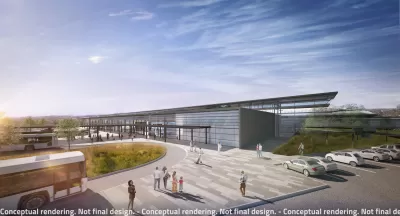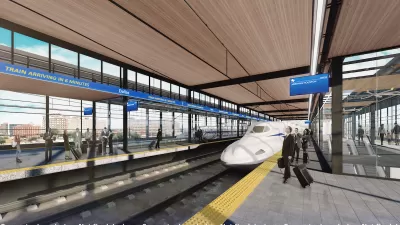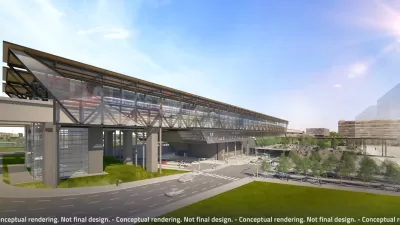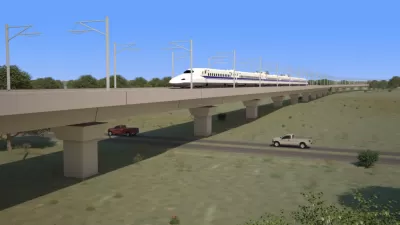In a decision that could change the calculus on a beleaguered high-speed rail project, the state’s highest court rules that the railroad has the right to acquire land along the project route.

According to an article from the High Speed Rail Alliance, a Texas Supreme Court decision could provide a major boost to the faltering central Texas bullet train project. “The court affirmed by a 5-3 vote that Texas Central Railroad is an interurban electric railway company, which allows it to exercise the right of eminent domain—i.e., it can pay fair-market rates to acquire the land needed to construct the 240-mile railway.”
As we pointed out in a prior story, the project faces an uncertain future due to the eminent domain issue, the departure of a CEO, cost overruns, and unpaid property taxes.
The High Speed Rail Alliance argues that the train is “desperately needed” by residents and commuters in a region with one of the nation’s fastest growing ‘super commute.’ “One stretch of Interstate 45, which connects Dallas and Houston, ranks as the most dangerous road in America. Congested and deadly in the best of times, the road is a gridlocked nightmare when the region is hit by hurricanes and flooding. A world-class HSR system would help immensely with evacuation planning and execution.”
The article points to the futility of expanding freeways to reduce congestion. “Meanwhile, Texas’s efforts to relieve road gridlock by building and expanding highways leads to one boondoggle after another. Most infamously, it spent $2.8 billion to widen Houston’s Katy Freeway to 26 lanes. Morning commute times spiked, as did afternoon commute times, which were soon 50 percent longer.”
FULL STORY: Houston to Dallas bullet-train project scores big court win

Maui's Vacation Rental Debate Turns Ugly
Verbal attacks, misinformation campaigns and fistfights plague a high-stakes debate to convert thousands of vacation rentals into long-term housing.

Planetizen Federal Action Tracker
A weekly monitor of how Trump’s orders and actions are impacting planners and planning in America.

In Urban Planning, AI Prompting Could be the New Design Thinking
Creativity has long been key to great urban design. What if we see AI as our new creative partner?

King County Supportive Housing Program Offers Hope for Unhoused Residents
The county is taking a ‘Housing First’ approach that prioritizes getting people into housing, then offering wraparound supportive services.

Researchers Use AI to Get Clearer Picture of US Housing
Analysts are using artificial intelligence to supercharge their research by allowing them to comb through data faster. Though these AI tools can be error prone, they save time and housing researchers are optimistic about the future.

Making Shared Micromobility More Inclusive
Cities and shared mobility system operators can do more to include people with disabilities in planning and operations, per a new report.
Urban Design for Planners 1: Software Tools
This six-course series explores essential urban design concepts using open source software and equips planners with the tools they need to participate fully in the urban design process.
Planning for Universal Design
Learn the tools for implementing Universal Design in planning regulations.
planning NEXT
Appalachian Highlands Housing Partners
Mpact (founded as Rail~Volution)
City of Camden Redevelopment Agency
City of Astoria
City of Portland
City of Laramie





























